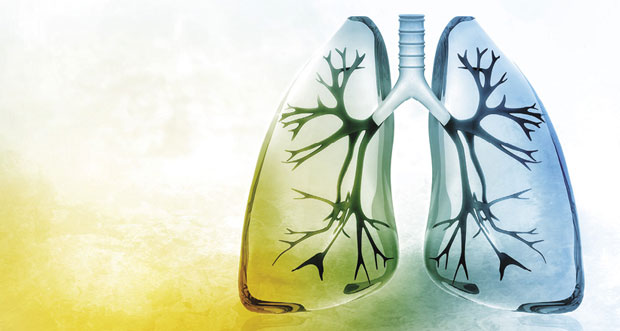 Nick Easey, Relationship Director at Churchill Environmental Services, discusses how remote sensors can monitor key factors, such as humidity and carbon dioxide, to produce a virus risk indicator score
Nick Easey, Relationship Director at Churchill Environmental Services, discusses how remote sensors can monitor key factors, such as humidity and carbon dioxide, to produce a virus risk indicator score
The Coronavirus pandemic has brought health and safety to the forefront of everyone’s minds. While previously, our primary concerns about viruses and bacteria arose from dirty surfaces, we have suddenly been made conscious of the air we breathe.
The average person breathes in 12,000 litres of air per day (Nilsson, 2008) and the quality of that air is vital in ensuring we remain healthy when using shared spaces. Breathing, coughing and sneezing can all introduce microscopic droplets – aerosols – into the air. Aerosols carry live viruses which can then be inhaled by others.
Wearing masks and maintaining a two-metre distance reduces this risk. However, aerosols can stay airborne for hours, travel longer distances, and land on surfaces. Adequate ventilation has been shown to significantly reduce the viral load in the air and lower the risk of infection.
CREATING HEALTHIER SPACES FOR THE LONG-TERM
While it is not currently possible to measure virus particles in the atmosphere, we are able to monitor temperature, humidity, and volumes of carbon dioxide, and use these factors to predict the survival rate of a virus and how far it can travel. This allows us to proactively address the risk of transmission in shared space.
Many people have been interacting in shared spaces throughout the pandemic as they use public transport or shop for groceries. However, as employees return to their workplace, the time spent in enclosed, communal spaces will increase drastically.
Building managers must ensure their sites are safe for users. Masks, social distancing, temperature checks, and other measures have already played an important role. Still, it is essential to minimise risk as far as possible, or progress made during lockdowns may be reversed and infection rates could rise again.
The Government’s Scientific Advisory Group for Emergencies stated that “Ventilation should be integral to the COVID-19 risk mitigation strategy for all multi-occupant public buildings and workplaces”(i).
Later this year, as we return to some form of ‘normal’, these prohibitive measures will slowly be removed. Ensuring high-quality ventilation, however, is a safety measure that can enhance everyday life, rather than inhibit it. Clean air has been shown to reduce staff sickness absence and improve alertness and productivity(ii). It is an investment that will continue offering a return long after other measures have been removed.
We are seeing the importance of workplace air quality being widely adopted. Parts of Europe have begun to recognise this at Government-level. The Dutch Government, for example, has created working groups to ensure sufficient levels of ventilation in schools(iii) and the German Government is investing €500 million into improving ventilation systems(iv) in public buildings to help stop the spread of Coronavirus. The UK’s ventilation and air conditioning regulations(v) have been in place since before the pandemic. But with the subject coming under such scrutiny, we may see updates to the regulations in the coming year.
WHAT CAN WE DO NOW?
To support people during the return to school and work, Churchill Environmental Services is providing clients with wireless, battery-powered sensors that record temperature, humidity, carbon dioxide, air pressure, radon, TVOCs and light. The smart devices then utilise metadata on virus survival rate, occupancy, ventilation, and the likelihood of infection to determine a virus risk indicator and score out of 10. Facilities managers can use this information to improve their systems and enhance building user safety.
Data-led provisions will be increasingly important as we adapt to new ways of working. Many workplaces are moving to a hybrid approach and have used the lockdowns to streamline their real estate portfolios. As employees return, building managers will need to adjust their service provision to fluctuating occupancy levels.
Some workplaces will undoubtedly experience high occupancy through the middle of the week while many employees will choose to ‘bookend’ their week by working from home on Monday and Friday. As office-use varies, HVAC systems – much like the cleaning and catering provision – will need to adjust or risk working inefficiently and wasting money and power. Data-led systems integrated with the Internet of Things will play a central role in assessing workplace system needs.
Achieving the right level of ventilation in a workplace is not always easy. Many facilities managers have been reducing the amount of recirculated air they use in HVAC systems and bringing in more fresh air in response to the pandemic. However, this comes at the cost of poorer temperature control. Constantly running HVAC systems will also increase power-use and noise pollution.
Managers will need to consider carefully what balance they will strike between HVAC systems and natural airflow, what systems to use, and to what extent. Unlike precautions such as hand-washing and social distancing, ventilation systems should be considered and tailored to each site. Such changes might seem intimidating at first but working closely with facilities management teams and effective use of data will allow you to find a system that continues to provide a return on investment long into the future.
By taking visible, proactive safety measures, employers can reassure their staff that health and safety is a priority. Ventilation is a key measure that must not be overlooked.
(iii) https://bit.ly/3wnxNqD





